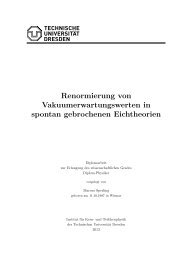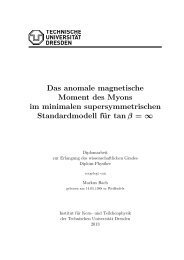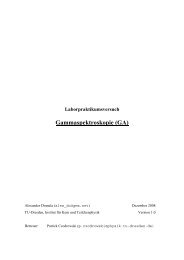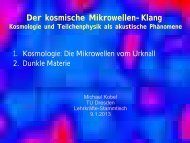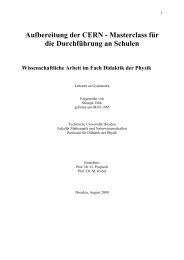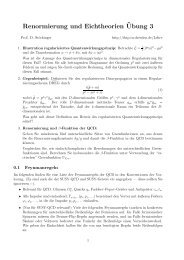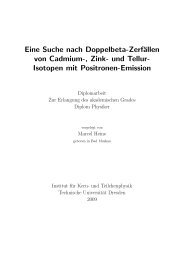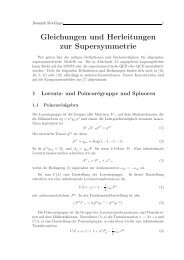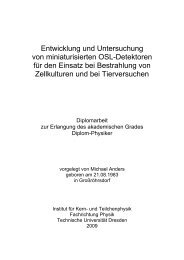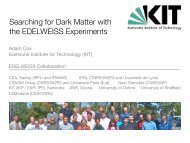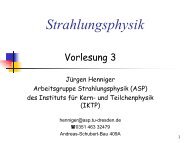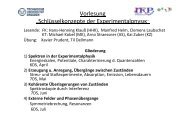a design study for a cobra upgrade to - Institut für Kern- und ...
a design study for a cobra upgrade to - Institut für Kern- und ...
a design study for a cobra upgrade to - Institut für Kern- und ...
You also want an ePaper? Increase the reach of your titles
YUMPU automatically turns print PDFs into web optimized ePapers that Google loves.
26 4 Scintillation detec<strong>to</strong>rs<br />
spectrum, produced by monoenergetic pho<strong>to</strong>ns of energy E > 2mec 2 .<br />
For detec<strong>to</strong>rs, also backscattering peaks, escape peaks and multiple<br />
Comp<strong>to</strong>n events can be seen in an energy spectrum.<br />
Figure 4.2: Energy spectrum of the primary electrons produced by monoenergetic<br />
pho<strong>to</strong>ns of energy E > 2moc 2 in an absorber [27].<br />
The residual energy of the scattered pho<strong>to</strong>ns which is not transferred <strong>to</strong><br />
electrons or positrons at the primary interaction is present in the scintilla<strong>to</strong>r<br />
as pho<strong>to</strong>ns of reduced energy. These are X-rays of energy Be, pho<strong>to</strong>ns<br />
of energy E − Tcs and annihilation quanta of energy mec 2 . X-rays<br />
are usually absorbed by the scintilla<strong>to</strong>r and the latter two have according<br />
<strong>to</strong> their reduced energy a higher probability of being absorbed than<br />
the primary pho<strong>to</strong>ns. Consequently a high efficiency <strong>for</strong> full pho<strong>to</strong>n<br />
energy detection can not be achieved with absorbers of slightly larger<br />
dimensions than the range of the primary pho<strong>to</strong>n. This requires absorber<br />
sizes were also secondary pho<strong>to</strong>ns, electrons and positrons are<br />
completely absorbed. Simulations considering the optimal absorber dimensions<br />
are presented in chapter 5.1—“Monte Carlo studies <strong>for</strong> the<br />
<strong>upgrade</strong> <strong>design</strong>”.<br />
NEUTRONS interact mainly with the nuclei of the absorber material,<br />
rather than with the a<strong>to</strong>mic electrons. As uncharged massive particles<br />
they penetrate the electron clouds of the a<strong>to</strong>m and collide with the nucleus.<br />
Scattering and absorption are the two possible types of interac-



